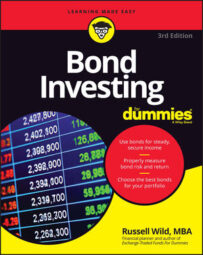Bonds have been a bulwark of portfolios throughout much of modern history, but that’s not to say that money — some serious money — hasn’t been lost. Here are examples of some bonds that haven’t fared well so you’re aware that even these relatively safe investment vehicles carry some risk.
Corporate bonds
Corporate bonds — generally considered the most risky kind of bonds — did not become popular in the United States until after the Civil War, when many railroads, experiencing a major building boom, had a sudden need for capital. During a depression in the early to mid 1890s, a good number of those railroads went bankrupt, taking many bondholders down with them.
Estimates indicate that more than one out of every three dollars invested in the U.S. bond market was lost. Thank goodness we haven’t seen anything like that since (although during the Great Depression of the 1930s, plenty of companies of all sorts went under, and many corporate bondholders again took it on the chin).
In more recent years, the global bond default rate has been less than 1 percent a year. Still, that equates to several dozen companies a year. In recent years, a number of airlines (Delta, Northwest), energy companies (Enron), and one auto parts company (Delphi) defaulted on their bonds.
Both General Motors and Ford experienced big downgrades (from investment-grade to speculative-grade), costing bondholders (especially those who needed to cash out holdings) many millions.
Closer to the present, Lehman Brothers, the fourth largest investment bank in the United States, went belly up in the financial crisis of 2008. Billions were lost by those in possession of Lehman Brothers bonds. (Many more billions were also lost in mortgage-backed securities and collateralized debt obligations. These investments are debt instruments issued by financial corporations, but they are very different animals than typical corporate bonds and rarely spoken of in the same breath.)
Most recently, we’ve witnessed the collapse of once very healthy corporations, from Borders to Sharper Image to Kodak. Even Hostess recently became little more than crumbs. As we’ve seen time and time again, corporations sometimes go under. None are too big to fail.
Municipal bonds
Municipal bonds, although much safer overall than typical corporate bonds, have also seen a few defaults. In 1978, Cleveland became the first major U.S. city to default on its bonds since the Great Depression. Three years prior, New York City likely would have defaulted on its bonds had the federal government not come to the rescue.
The largest default in the history of the municipal bond market was that of the Washington Public Power Supply System (WPPSS, known informally as “Whoops”). In 1982, bond investors lost $2.25 billion following the municipal corporation’s failed program to build five nuclear power plants in Washington to supply electricity to the Pacific Northwest. Only one of the five planned nuclear plants was ever completed. Investors got seriously nuked.
Despite lots of talk about the prospect of massive municipal bankruptcies, not many have occurred. In recent years, we’ve seen record numbers, but those numbers are not huge, by any means. In fact, ten U.S. municipalities filed for bankruptcy in 2011, following six in 2010.
The largest of the 2011 lot was Jefferson County, Alabama, the most populous county in the state. Bondholders have not been getting interest on their Jefferson County bonds, and, as of this writing in 2012, it is unclear whether their principal will eventually be returned in full.
Several budget-challenged cities and counties have had to make the difficult choice between paying off bondholders or making good on pension obligations for retired police, firefighters, and teachers. Thus far, the retired workers have suffered more financial pain than the bondholders, perhaps because they have less political clout — and no one wants to alienate bondholders, who may provide much-needed cash in the future.
Sovereign bonds
Nations worldwide also issue government bonds. These are often called sovereign bonds. The largest default of all time occurred in 1917 as revolutionaries in Russia were attempting to free the people by breaking the bonds, so to speak, of imperialist oppression. Bonds were broken, for sure; with the collapse of the czarist regime, billions and billions of rubles-worth of Russian bonds were suddenly worth less than non-alcoholic vodka.
Most had been sold to Western Europeans. In France, the Parisian government urged people to reject the new Bolshevik regime and show their support of the monarch in Moscow by purchasing Russian bonds. About half of all French households held at least some Russian debt.
Sometimes history can repeat itself or, at least, create echoes of the past. In 1998, one of the largest bond defaults of the modern era occurred once again in Moscow. The Russian government, facing a collapse of its currency, stopped payment on about $40 billion of bonds. And in 2002, Argentina’s financial decline forced bondholders to accept 25 cents on the dollar for its outstanding debt of $90 billion.
Bonds of emerging-market nations, such as Russia, Argentina, Mexico, and Turkmenistan, have been one of the hottest investment sectors in the past several years. The returns of late have been phenomenal, but how quickly people forget the past! Those bonds can be very volatile, and investing in them means risking your principal.
Indeed, the recent global awareness of serious debt problems in several European nations has resulted in fears that even these developed nations (which presumably have already emerged) could default on their bond obligations. This fear has caused their bond prices to drop dramatically and yields to rise sharply. Clearly, the collective wisdom of the bond market sees the government of Greece as very likely to default.

